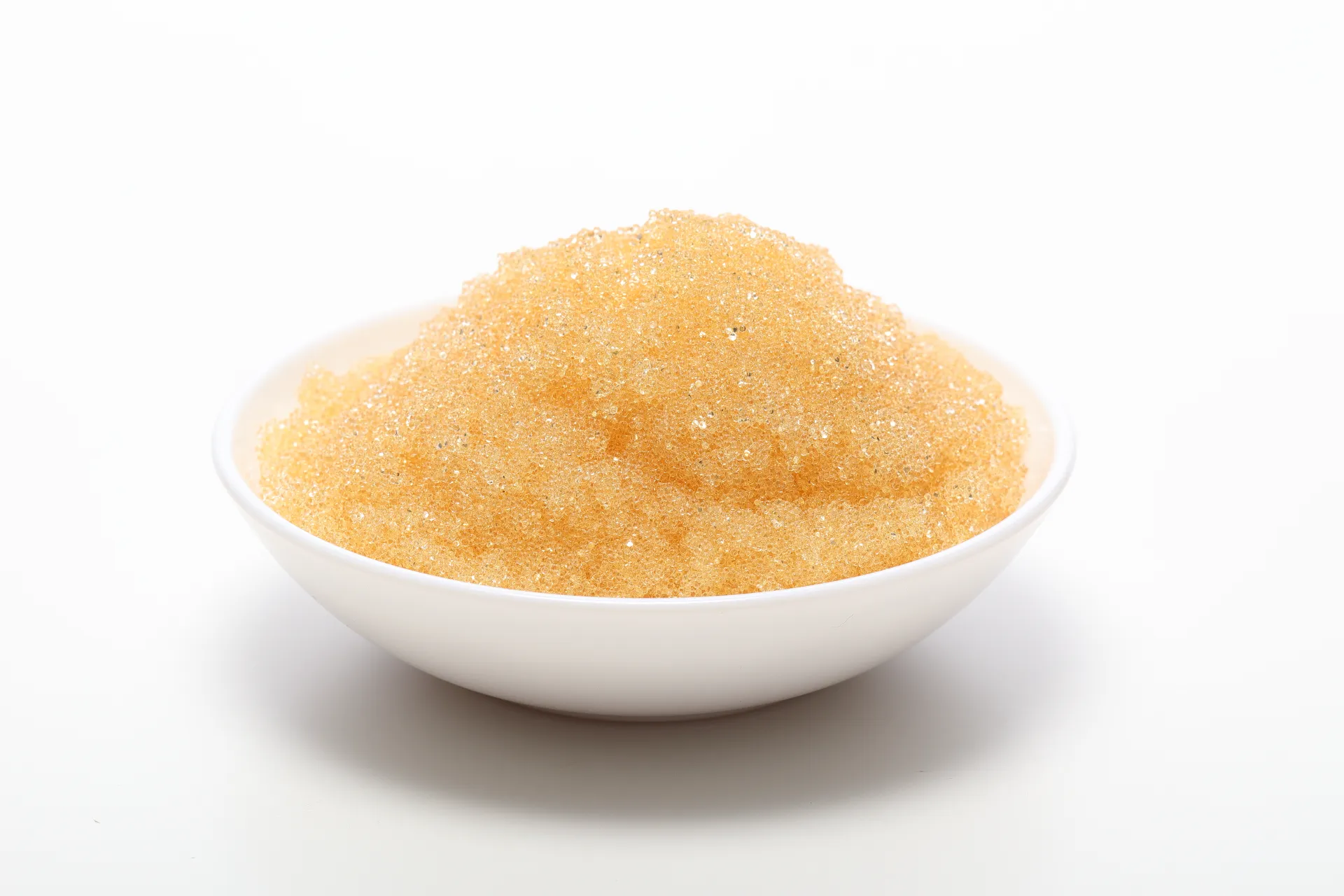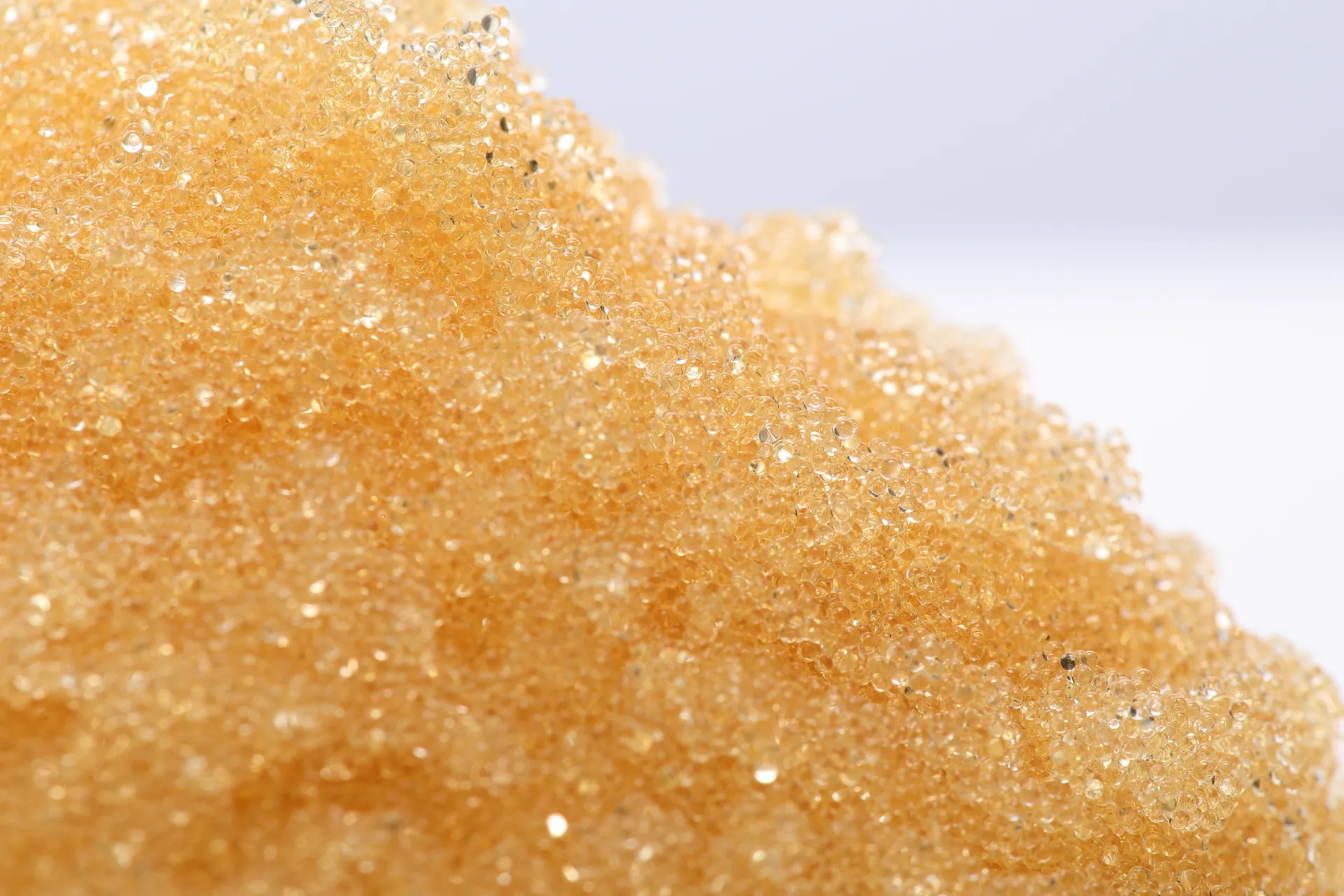Strong Base Anion Exchange Resin 201X8 OH: insider notes from the field
If you work in ultrapure water or metals recovery, you already speak the language of ion exchange resin. This particular model—201X8 OH—has been showing up on my site visits more often, and for good reasons I’ll get into. To be honest, I was skeptical at first; type I OH-form resins are great workhorses, but they live or die by rinse behavior and mechanical strength.

What it is (and why it matters)
201X8 OH is a gel-type, polystyrene–DVB matrix with quaternary ammonium functional groups (–N(CH3)3), i.e., a strong base type I. In practice, that translates to high capacity for strong/weak acids, good silica pickup in polishing, and decent chemical stability. It’s used in pure water trains, wastewater polishing, biochemical separations, and yes—hydrometallurgy for gold/silver/tungsten/molybdenum extraction. Many customers say the OH rinse reaches conductivity targets surprisingly fast after a couple of bed volumes, which—if you’ve fought slow-rinsing beds—feels like a small miracle.

Industry trends I’m seeing
- Shift toward lower-TOC ion exchange resin for semiconductor and pharma water.
- More interest in PFAS polishing via SBA resins (pilot data is promising, although real-world matrices vary).
- Regeneration optimization: lower NaOH dose with smarter flow profiles to cut OPEX.
Typical specs (field-friendly)
| Property | Typical value (≈, real-world may vary) |
|---|---|
| Matrix / Type | Polystyrene-DVB, gel; strong base type I (–N(CH3)3) |
| Ionic form (as shipped) | OH− |
| Total exchange capacity | ≈0.9–1.1 eq/L (OH− form) |
| Moisture content | ≈48–52% |
| Bead size | ≈0.6–0.8 mm; UC ≤1.6 |
| Bulk density | ≈650–700 g/L |
| Operating pH | 0–14 |
| Temperature limit (OH−) | ≤60 °C recommended |
| Regenerant | NaOH 4–8% w/w, co- or counter-current |
Process flow (how plants actually run it)
- Materials: gel-type polystyrene-DVB beads with quaternary ammonium groups.
- Service: remove anions (Cl−, SO4²−, NO3−, silica) in demin or mixed-bed polishers.
- Regeneration: NaOH, followed by slow rinse → fast rinse to conductivity spec.
- Testing: per ASTM D2187—capacity, moisture, bead integrity; optional TOC leach.
- Service life: ≈3–5 years in DI duty; faster turnover in harsh wastewater matrices.
- Industries: power, electronics, pharma, mining, food & beverage, lab water.

Applications and advantages
- Ultrapure water: low silica leak; mixed-bed polishing with strong acid cation partners.
- Hydrometallurgy: extraction/recovery of Au, Ag, W, Mo—good osmotic shock resistance.
- Wastewater: nitrate/sulfate control; PFAS pilot polishing (site-dependent).
Advantages I’ve observed: rugged beads, predictable regeneration, and consistent pressure drop. One client noted TOC after startup
Vendor snapshot (quick compare)
| Vendor / Product | Type | Capacity (OH−, eq/L) | Certs | Lead time |
|---|---|---|---|---|
| LIJI 201X8 OH | SBA Type I, gel | ≈0.9–1.1 | ISO 9001; NSF/ANSI 61 (on request) | Around 2–4 weeks |
| Purolite A400 | SBA Type I, gel | ≈0.9–1.1 | NSF/ANSI 61 | Stock-dependent |
| AmberLite IRA402 | SBA Type I, gel | ≈0.9–1.0 | NSF/ANSI 61 | Stock-dependent |
Note: values are indicative from public datasheets and field notes.
Customization and QC
Available options include tighter bead size cuts, OH−/Cl− shipping form, and pre-rinse to conductivity/TOC targets. Testing per ASTM D2187 and internal QC: moisture, crush strength, uniformity coefficient, and chloride leakage checks. Certifications: ISO 9001; NSF/ANSI 61 availability for potable applications.

Mini case notes
- Electronics fab: mixed-bed with 201X8 OH cut silica
- Gold circuit: steady loading, easy strip; operators liked the bead robustness under osmotic swings.
- Municipal pilot: nitrate reduction met seasonal peaks with modest NaOH dose; monitoring continued.
Origin and logistics: NO.2 East Jianshe Road, High-Tech Industrial Development South Zone, Wei County, Xingtai, Hebei Province, China. Freight packing is standard moisture-barrier drums or supersacks.
Quick tips
- Pre-rinse to stable conductivity and TOC before tying into a critical loop.
- Keep OH-form below 60 °C; for hotter service, evaluate chloride-form first.
- Track bed expansion and pressure drop; it reveals early fouling before capacity nosedives.
Authoritative references
- ASTM D2187 – Standard Test Methods for Physical and Chemical Properties of Particulate Ion-Exchange Resins.
- NSF/ANSI 61 – Drinking Water System Components – Health Effects.
- IUPAC Gold Book – Ion-exchange definitions and terminology.
- US EPA Technical Briefs – PFAS treatment with ion exchange.
Hebei Lijiang Biotechnology Co., Ltd, is a new material manufacturer specializing in the production of high-performance special ion exchange resins.mixed bed resin suppliers It is a modern high-tech enterprise that integrates the research and development,production, sales, and service of resin materials and resin terminal products.ion exchange resin The company is committed to producing high-quality industrial grade, food grade,pharmaceutical grade, and nuclear grade resins.cation exchange resin It has passed ISO9001 management certification,SGS certification, and WQA international certification from the American Water Quality Association, and has obtained a national food hygiene license. Food grade resin products comply with FDA standards in the United States.super blog